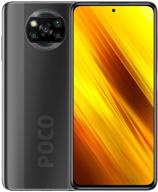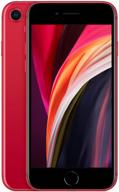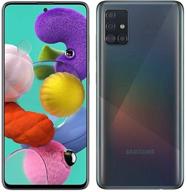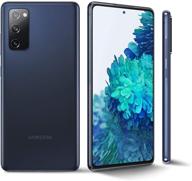- 1. A very high-quality camera, despite the fact that Samsung has a lot of room for improvement in this area. Following the release of the Huawei P10, the camera has improved, although initial impressions do not indicate a wow factor. On the other hand, a little over a month later, I was sure that the S20+ was leagues ahead of the previous phone in terms of photography, and that it was two heads above the old phone in terms of video filming. The camera on the phone uses a hybrid zoom rather than an optical one. Only x1.06 of zoom is achieved using the camera's optical zoom; the rest is accomplished through digital technology. But, when I contrasted the performance of the approximation with that of a friend's iPhone XS, the Samsung S20+ performed more admirably in terms of the finer details. - The S20night +'s mode is noticeably superior to that of another friend's phone, the Huawei P20 Pro. - The level of detail that is captured in this photograph of the faces is outstanding. The most important thing is to avoid shooting into the light that is present in the room. After then, the faces start to become soapy. - I also compared the photographs taken with the S20 + to those taken with my Nikon D5100 DSLR, which is currently collecting dust in the back of the closet. Both are admirable when viewed in the appropriate context. Both in artificial light and in low light, the S20+ performs better than the DSLR. The S20+ cannot compete with the quality of a DSLR in the following situations: photographing faces indoors against daylight; zooming in during the day. - When recording video with the phone, the focusing performed quite well, and it did not get sluggish even when there was motion in the frame. After P10, it's nothing but a made-up story. - While taking video in low light, the scene tends to have a lot of background noise. It would be great if we could get rid of more of the background noise here. On the other hand, nothing at all was seen on the old phone when viewed under these conditions. 2. Beautiful full-size display. Following in its footsteps, the Huawei P10 is seen as a pager. 3. An easy-to-navigate and intuitive user interface. In the 120 Hz setting, the phone operates quite smoothly; however, in this mode, my eyes became fatigued very fast. It was necessary for me to reset to 60 Hz. Nonetheless, even after installing P10, the phone continues to operate in a very smooth manner. 4. Beautiful interface ONE UI (compare with EMUI). 5. You have the ability to give each application its own unique notification sound. Assigning my sounds to a few different programs was something that I felt was really vital to do. This was not possible with EMUI 9.1 at the time. 6. Excellent vibration. Because I found the vibration to be so distracting while using the P10, it was disabled for me. On the other hand, tactile feedback during typing is always active on this device. Pleasant to use.
- 1. The back of the phone appears to be of low quality when it is not protected by a case. A monotonous and low-quality sound when tapped. 2. Utilizing an under-screen scanner to unlock the device, as opposed to the P10's capacitive sensor, is a step in the wrong direction. You will need to wait twice as long for the finger recognition process. The unlocking process with the face camera is similarly slow. Moreover, it is not very effective when used in low light. 3. When compared to P10, autonomy is only 20% more advanced (and this is in 60 Hz mode). I wanted to activate the mode that saves power (which is referred to as "Medium performance" on this device), however that mode does not allow the calendar to be synchronized. I was forced to reset everything and start over in the "Optimal Performance" setting. In point of fact, if I listen to music and watch two hours of screen time every day, my phone will last for 1.5 days. It will not endure for more than two days. It is true that in order to defend Samsung, it is necessary to point out that all of the apps in this system are stuck in RAM, but in Huawei, they were continually discharged from the background. In one way or another, I expected more from a battery with a capacity of 4500 mAh. 4. Eye strain when viewing at 120 Hz. shifted to operate at 60 hertz. This was a bit of a letdown for me considering that 120 Hz was one of the reasons why I decided to purchase this particular phone as opposed to, for instance, the Honor V30 Pro. 5. RAM management is not intuitive. This is the only significant criticism I have regarding the user interface; I have already mastered the rest of it and become accustomed to it. You are able to close programs by navigating to the "Recent applications" menu, the "Device utilization" section, or by selecting the "Power saving mode." It's a little bit hard to understand. That is irrelevant to me, but I would like that additional applications do not become stuck in the background (and hence do not consume the battery), while at the same time ensuring that all notifications, ates, and synchronizations take place without any lag time. In this section, it would be possible to provide the option of manually adjusting the power-saving mode's parameters.
- Pleasant to hold in one's palm Excellent screen quality and refresh rate. Loud noise Nice work speed
- C A M E R A ! To put it plainly, this is the lowest price that the guys provide for their offline work.
- Fluidity, the screen, and form factor
- The back cover, the camera, and the battery life
- Screen
- speaker, battery
- The headphones are of decent quality, and there is a movie playing on the front screen.
- Pricing, fee, and fingerprints are required.
- Display, the primary camera
- batteries, Exynos processors, and front cameras
- Display, photograph, and presentation
- Video recording with a fingerprint reader and in "professional mode"
- The image will appear on the screen. Camera. Audio from the speaker. More precision in the GPS positioning. Film from the manufacturing facility (although it costs glass gorilla 6). Optical stabilization. The screen automatically activates as you pick up the phone, which is a very helpful feature. A phone with a minimal profile. Occasionally, Ai will make itself known; for example, you may notice that it is attempting to conserve energy for itself by displaying unexpected notifications on the screen.
- Poor modem. Wi-Fi also doesn't operate well. That does not feel like 8GB of RAM. The refresh rate of the screen is at 60 Hz, and the battery life is short. T9 is ridiculously effective. The kit does not include a single basic cover. It appears that there will be a homeless kit in 2022. The set included bare containers of various sizes. There appeared to be an adaptor, but upon closer inspection, it was devoid of content. On the other hand, there is a box.
- Display, body design, and speed were prioritized.
- Autonomy, camera.
- Sound from the speaker, the screen, and the camera
- The battery was weak, the fingerprint sensor was slow, there was no notification LED, the look was uninspiring, and the price was ridiculous.
- The display quality, the overall sound quality, and the compact design.
- More batteries, more batteries, and still more batteries!
- Screen; Quality of assembly and materials used; Out of the box, a branded protection film that is quite good quality is already glued on the screen; Autonomy
- - Camera (zoom trick, or rather crop to gain zoom); - The sub-screen scanner works disgustingly; - Intrusive branded software and self-promotion in the company's services; - Camera (zoom trick, or rather crop to get zoom); -
- It is quite attractive in the shade of red that I have. The charge will last me for about 48 hours and a half. A lightning-fast charge that can go from 15 to 100 percent in just one hour. The glass has an extremely bright appearance. Feels good against the skin.
- The administration of a screenshot is difficult. A simple camera, which can be seen in both the photo and the video. The width is not quite as broad as I would have liked it to be.



















